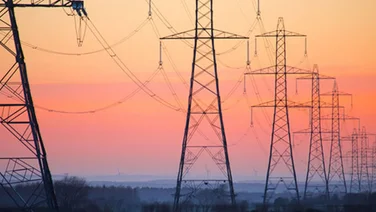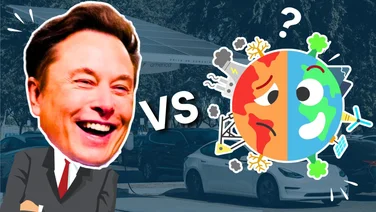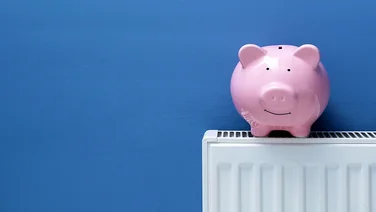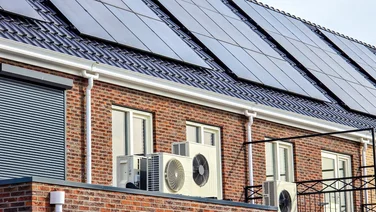- The EFL is making big strides in sustainability
- Three football clubs are EFL GreenCode accredited
- Small clubs are setting an example for small businesses
- We interview David Farebrother about sustainability at Sutton United FC

Clubs across the English football pyramid have embraced sustainability, like Sutton United at their Gander Green Lane ground – credit: Sutton United FC
The need to cut carbon emissions affects every area of our lives. Sport is no different, and as the world’s most popular pastime, the world of football needs to be as engaged in saving the planet as any other.
Football clubs play many roles; the biggest are global brands with hundreds of millions of fans around the world, generating a fortune in revenue from sponsors and broadcasters.
Those lower down the football pyramid, while not having the resources of the Premier League, can still help the environment, and some have succeeded through using solar energy, recycling, heat pumps, sharing equipment and ideas with local businesses and much else.
Fresh off an exciting Euro 2024, and with the start of the 2024/25 season almost upon us, we’ve compiled a short list of the best performing lower league football clubs.
We’ve done this to demonstrate the importance of sustainability across the football league and highlight how it is possible to cut emissions on a small budget.
We will keep on top of this page and update it as more clubs pursue sustainability.
As part of our look at sustainability in the EFL, we spoke exclusively to Dave Farebrother, former Chairman of the Board at Sutton United and the person largely responsible for the club’s green transformation, about how clubs can be sustainable with little money.
What is the EFL GreenCode scheme?
The English Football League (EFL) – the Championship, League 1, and League 2 – has launched initiatives to encourage clubs to cut their emissions and educate fans on the importance of being environmentally friendly.
One of its biggest schemes is the EFL Green Club, a joint project with GreenCode – the global environmental accreditation – which it began in October 2021 as a way of supporting clubs to improve their green practices and operations.
It is a voluntary scheme that assesses clubs’ environmental performance and offers guidance. It includes a wide-ranging questionnaire that scores clubs on their sustainability credentials. To become accredited, a club must score 76 or higher, but these figures aren’t always made public.
Once they have been assessed and deemed to be at the required level for a full audit, they are put forward to potentially become GreenCode accredited, which is the ultimate goal of the scheme.
As of July 2024, there are just three GreenCode accredited clubs: Forest Green Rovers, Sutton United and Bristol City.
Interview with David Farebrother, former Chairman of the Board of Directors, Sutton United Football Club
Dave Farebrother was the driving force behind Sutton United’s green mission
When it comes to sustainability in the lower leagues, there are few clubs who have done more than Sutton United.
Central to the club’s green transformation has been Dave Farebrother, Chairman of the Board of Directors from 2011 to 2024 and sustainability professional.
Speaking to The Eco Experts, Farebrother explains that it is possible to be green on little or no money, and that the best way to transform any business is to make sure you’re consistently improving and put systems in place to constantly look for new ways to cut emissions, including the use of sustainability experts.
EE: Can you tell us about the Sutton United’s green journey?
I’ve spent 38 years as an energy manager. When I was made chairman in 2011, one of the first things I wanted to introduce was a ‘green agenda’ because we had never looked at it before.
However, we had no money and we still don’t have any money, so what can you do without spending large amounts? The first thing we did was when we were refurbishing, we replaced the internal lights with LEDs.
Since 2011, we’ve gradually done that, and now over 90% of our internal lighting is LED. In 2017 we were able to upgrade the floodlights to LED when we played Arsenal in the FA Cup, because we had more income from that game, and we’ve upgraded them again since.
We’ve double-glazed our main function room, and one of our sponsors said, ‘we’ve got a spare heat pump lying around, we’ll fit it for you’. We put that in the boardroom, we then decided to put heat pumps in the main function room and that meant we could get rid of our two gas boilers.
We’ve gradually been decarbonising on the heating side and lowering our energy consumption. When we got promoted to the EFL in 2021 we re-did the changing room and made everything electric.
The board is looking at putting in new EV charging points, and they’re talking to a few suppliers.
Our kit van was diesel and was one of our biggest contributors of Scope 1 emissions, we wanted to change that to EV, but that wouldn’t make sense without charging points, so we’ve gone hybrid with a view to go EV as soon as we’re ready.
The manager’s car is fully EV. We have an environmental management system in place and an energy management system. That’s my area, and there aren’t that many other cubs that have a sustainability professional in place, so that’s an advantage.
We report absolutely everything from a Scope 1, 2, 3 perspective and I’d be very surprised if there was another club who went to the same level as us when it comes to Scope 3 reporting.
That’s what we do, we try to do it without spending money, and a lot of things like LED, double glazing and heat pumps, have great payback in the long run.
Our local authority introduced its own scheme, which is similar to the EFL GreenCode. If you met the requirements you got a 70% reduction in energy rates; and it mirrored what we were already doing, and as we passed with flying colours, we got money back for doing the green things.
EE: Does your green strategy affect the companies and suppliers you work with?
We’re small fry in the market, so when we look at kits, floodlights etc, we’re using the same suppliers as Man Utd, Chelsea, Liverpool, Arsenal, etc., but we don’t have their buying power.
We’re never going to persuade our suppliers to go down a green route that they’re not already on because we’re not a big customer.
But we have written a procurement strategy, and we look at the social side as well as the environment.
For instance, we’re looking at our caterers’ procurement processes to see if they’re signed up to Red Tractor or anything like that and what they do with their waste and how much plastic they use in their packaging, that sort of thing.
The next is to use, where possible, local suppliers, and by local I mean genuinely local, not buying a chiller made in China and saying it’s local because the shop is in Wimbledon.
We’re asking our suppliers if they’re ISO 14,001 (an internationally recognised standard for environment management) – at the moment we’re still at the ‘are you doing?’ stage, and we’re not at the stage where we can say ‘we’re not dealing with you because of your carbon footprint’. I think we may be in the next 2-3 years.
Most people don’t quite understand that as legislation changes, these types of things are going to become expected as normal, rather than an exception.
I don’t want to run before we can walk, even if we’ve done a lot for what we might be expected to do.
We made sure our back-up generator was made in the UK, but it isn’t possible to do that with everything because we don’t make a lot in the UK – a lot of LED lights are made in China for instance.
We’ve looked at solar PV, but it’s not viable for us at the minute because the one place where they could possibly go will have to be demolished in the next five years as part of the stadium upgrade, so that ruins the business case.
We try to reuse as much as we can, and that is as much economics as sustainability for us. Other local businesses will say ‘we’ve got furniture we don’t need, do you want it?’ and we’ll take it if it is better than what we have.
We have sustainability newspapers that get circulated once a quarter and a dedicated page on our website.
EE: Is it harder for smaller clubs to be sustainable?
We’re not a massive user of energy because we have a small stadium, and we have tried to cut energy where we can.
Almost everything is just playing around the edges, it’s only the government and big companies that can make a big difference, but if we can do our bit and engage the public, that helps.
We’re no different to any other part of society, we’ve got largely younger fans who say ‘this is my club and I’m proud it’s doing something’, and we need to convince those who are more sceptical. There’s a lot of pressure from the younger generations to be sustainable.
The battle for us to convince people to come and watch a game, if they do so, and if they see what we’re doing, they can become lifelong supporters.
EE: What advice would you give to other clubs of similar size that want to be sustainable?
Firstly, don’t think that sustainability costs money.
I have never been involved in a sustainability project where, if it is properly planned, cutting emissions will cost you more in the long run, even if it costs a bit upfront.
There are things that you can do in the general course of management, such as always taking the sustainable option where possible.
Nobody is going to zero carbon overnight, but keep chipping away, and always remember that it doesn’t matter if someone does it better. Never mind what Man Utd do, what matters is that you do better than you did last year and you keep doing better.
Credit: Sutton United FC
The greenest clubs in the lower leagues
1. Forest Green Rovers
Perhaps the most well-known sustainability-focused club in the UK and beyond, Forest Green Rovers has made protecting the environment a priority, investing in clean energy, biodiversity, water efficiency, education, and even food.
For starters, 100% of the League 1 club’s property is powered by clean energy. About 20% of its annual energy usage comes from onsite solar panels and solar trackers, supplemented by wind power.
The energy that isn’t generated directly from these sources from clean energy and technology firm Ecotricity. This comes in the form of natural gas.
The Gloucestershire club’s green journey, which began in 2010, has even stretched to the players’ and fans’ diets – it only allows vegan produce on its property, the first club to do so.
Additionally, it has other green milestones to its name, such as having the world’s first organic football pitch. Its stadium, The New Lawn, is on a 2.84 hectare grassland site with wildlife and native trees.
Since 2018, the club’s carbon emissions have shrunk from 83.5 tonnes to 65.3 tonnes in 2024. As well as that, its carbon emissions per matchgoing fan have fallen from 3.3 in 20211 to 0.78 in 2024.
As well as that, all of the food served at Forest Green Rovers on matchday is 100% vegan, and it works closely with local brands such as Stroud Brewery and international brands like Quorn to ensure food is procured ethically and sustainably.
2. Sutton United FC
Despite being relegated from the EFL at the end of the 2023/24 season, Sutton United FC remain one of just three EFL Green Clubs and one of the most forward-thinking in the country from a sustainability perspective.
“The club recognises it has a responsibility to address the environmental impact of its activities and, in particular, the threat posed by Global Climate Change,” the London-based football club states in its environmental policy.
In the past decade, it launched a range of initiatives to cut carbon usage and waste across its stadium and training facilities.
These include decommissioning two gas boilers with low-carbon electric heat pumps..
It uses electricity where possible, including in the changing rooms where the showers were once fed by hot water from a gas boiler. Its electricity contract is also due to move to a green tariff in December 2024.
When it comes to lighting, 50% of its spectator lighting is now LED, soon to be 100%, and 95% of its internal lighting is as well.
The club has made numerous other changes to its operations in a bid to cut emissions, such as making the kit man’s van hybrid, and it is currently looking to install EV chargers.
3. Bristol City FC
Championship club Bristol City are the final club on our list and also the third club in EFL Green Code group, having gained accreditation in 2023.
Similarly to Forest Green and Sutton United, Bristol City has made huge efforts to be sustainable across its entire operations, and it works with local partners and authorities to do so.
Its sustainability practices cover the energy that is generated and consumed at the ground, the team’s kits, the food and drink it provides on match days and encouraging fans to use public transport to travel to games.
In August 2022, it launched Project Whitebeam, a joint initiative with Bristol Sport Group to “recognise, measure and minimise” its impact on the environment.
As part of Project Whitebeam, Bristol City installed solar panels on Ashton Gate, its stadium, which generate over 100,000 kWh of electricity a year.
Additionally, it also utilises energy efficient lighting and uses a modern Building Management System to save water.
Its training ground, the Robins High Performance Centre, also generates 90% of its energy through renewable technology.
How we chose the clubs on our sustainability list
We chose the clubs based on available data and analysis, as well as the official EFL Green club accreditation.
There are many clubs across the pyramid, however we have chosen to focus on those who have been formally recognised by the football authorities, and those who are great examples of what a club can do on a limited budget.
How sustainable is the Premier League?
Sustainability is vitally important across football, and it is something that, as is evident by the work of the clubs, is not a matter of revenue or size.
Clubs across the world can help make the world greener without hindering the world’s most popular sport.
More than half of the clubs in the Premier League generate 100% of their energy through renewable sources, according to the Premier League Clubs Environmental Sustainability report, but this still leaves work to do as some clubs are only partially using renewable sources of energy.
Premier League clubs have advantages and disadvantages when it comes to being sustainable. The advantage is that they have more money to spend on being sustainable, as their revenue is often much bigger.
This is also a challenge because their day-to-day operations are much bigger and they inevitably emit more carbon than smaller clubs as they travel further and have bigger stadiums, as well as having more fans.
Being bigger may also mean they have multiple investors as part of their ownership model, and this could possibly make it harder to initiate major green projects.
Best of the rest
While there are only three clubs GreenCode Accredited, there are many others who are EFL Green Club Members:
- Grimsby Town
- Harrogate Town
- Hull City
- Ipswich Town
- Leyton Orient
- Lincoln City
- Luton Town
- Middlesbrough
- Millwall
- Morecambe
- Northampton Town
- Norwich City
- Notts County
- Oxford United
- Peterborough United
- Plymouth Argyle
- Portsmouth
- Port Vale
- Queens Park Rangers
- Rochdale*
- Rotherham United
- Salford City
- Sheffield United*
- Sheffield Wednesday
- Shrewsbury Town
- Southampton
- Sutton United
- Swansea City
- Swindon Town
- Walsall
- Tranmere Rovers
- Watford FC Community Trust
- West Bromwich Albion
- Wigan Athletic
- Wycombe Wanderers
Summary
- Forest Green Rovers, Sutton United FC and Bristol City are lower league clubs who have excelled in being sustainable, as demonstrated by their GreenCode Accreditation.
- Clubs in the EFL, in particular those EFL GreenCode Accredited, show how it is possible to be eco-friendly on a small budget.
- According to Dave Farebrother, sustainability need not cost a lot of money.
- The pathway towards sustainability is to find small wins and consistently improve, and work with local business partners where possible.







